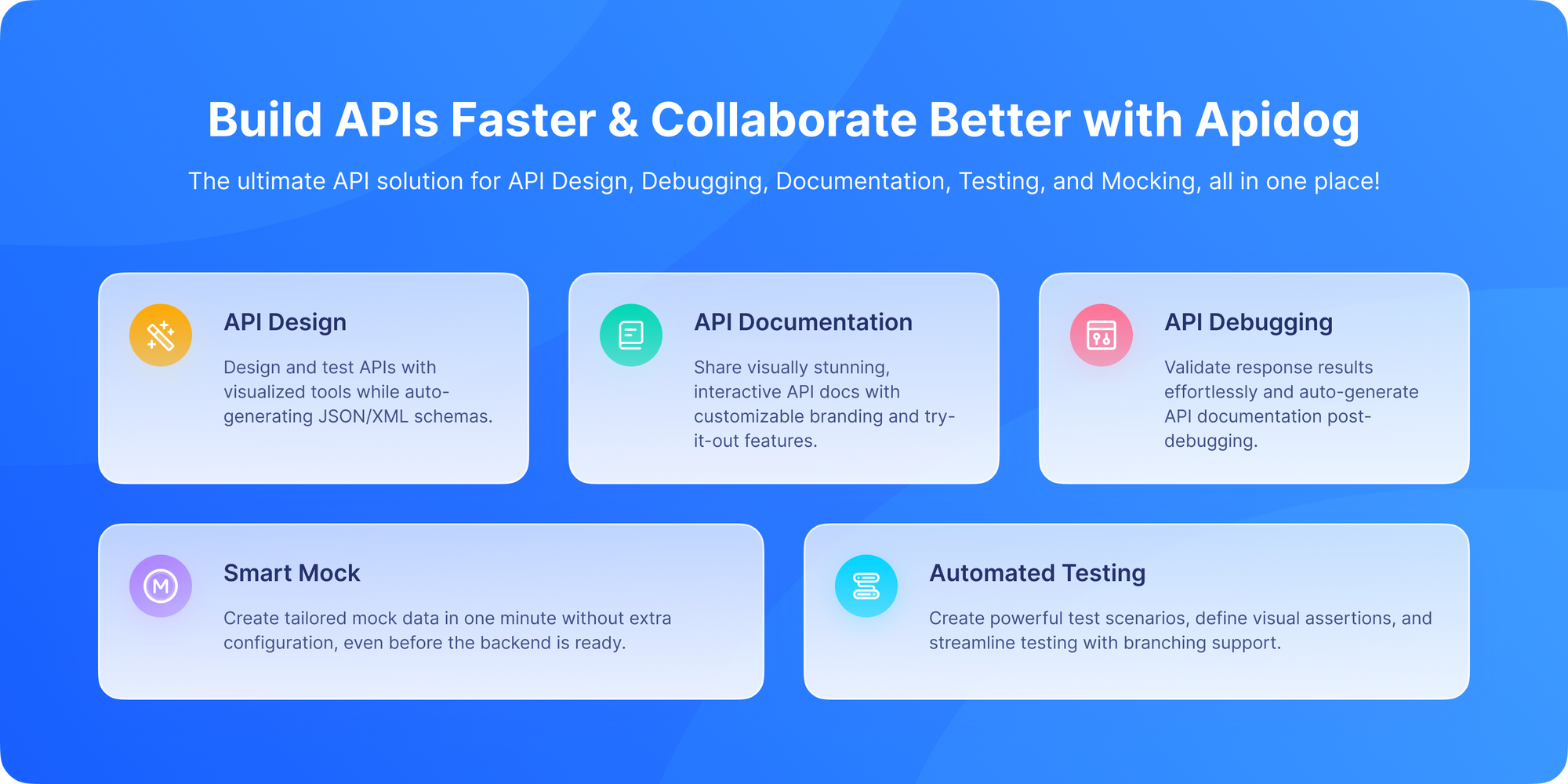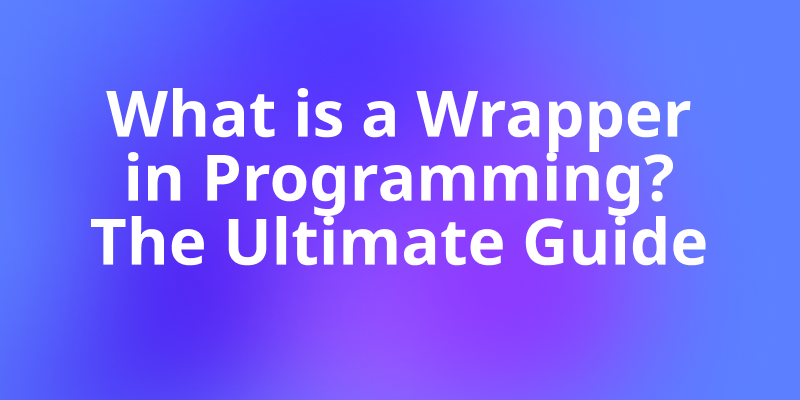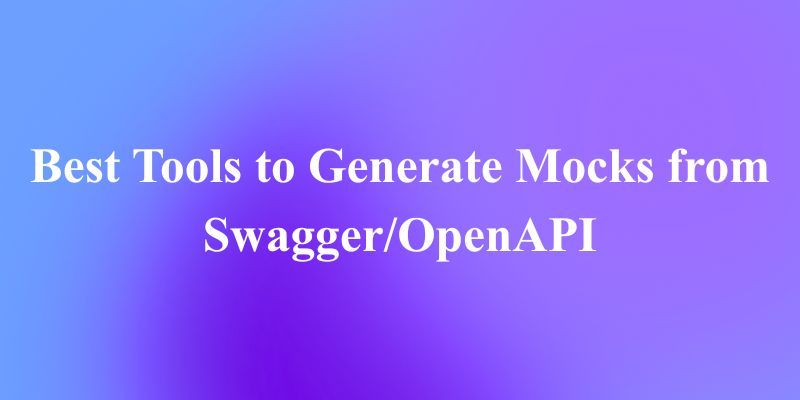Hey there! So, you’ve stumbled upon the term "wrapper" thrown around in conversations in your coding journey, maybe in a GitHub issue, a code review, or a conversation with a senior developer. Maybe a teammate said, "Oh, just write a wrapper for that API call", or you saw a library described as a wrapper around another service. Your brain immediately went, "Okay, I get the general idea, but... what exactly is it?" Is it some mysterious software gadget or just another buzzword developers throw around? Don't worry; you're in good company. This is one of those concepts that seems simple on the surface but has incredible depth and importance in the world of software development. But what exactly is a wrapper in programming? And why do developers rely on wrappers so much?
Furthermore, understanding wrappers isn't just academic; it’s a practical superpower. It allows you to integrate with complex systems, write cleaner code, and ultimately, become a more effective programmer.
Anyway, let's peel back the layers on this concept. By the end of this blog post, you'll not only know what a wrapper is, but you'll also see them everywhere in your codebase.
Want an integrated, All-in-One platform for your Developer Team to work together with maximum productivity?
Apidog delivers all your demands, and replaces Postman at a much more affordable price!
Let's Start with a Simple Analogy: The Candy wrapper
Before we dive into code, let's talk about candy. Seriously.
Imagine a delicious chocolate bar. Now, you can't just have a naked chocolate bar floating around in your backpack, right? It would get melted, covered in lint, and generally become a mess. So, what do we do? We wrap it in a shiny, protective foil and paper wrapper.
This candy wrapper serves a few crucial purposes:
- Protection: It shields the chocolate from the outside world (dirt, heat, your car keys).
- Simplification: It provides a simple, clean label and way to hold the candy. You don't need to know the exact chemical composition of the chocolate to enjoy it; you just interact with the wrapper (tear it open and eat!).
- Consistency: Every candy bar from that brand has the same wrapper, giving you a familiar and predictable experience.
In programming, a wrapper is essentially the same thing! It's a piece of code that "wraps" around another piece of code or system. The core idea is to provide a new, often simpler, more secure, or more standardized interface to the underlying, potentially more complex, resource.
What Does "Wrapper" Mean in Code?
Alright, analogy time is over. Let's get technical.
A wrapper, in programming terms, is a class, function, module, or any other code structure that encapsulates the functionality of another component. Its primary job is to mediate access to the underlying component, transforming its interface into something more convenient or suitable for a specific context. At its core, a wrapper is like a protective or helpful "cover" around something else in programming.
In software:
- A wrapper calls another function, library, or service.
- It often hides complexity from the user.
- It may provide a cleaner or safer interface.
Think of it as a translator or an ambassador. You have a complex foreign dignitary (the legacy system or complex library). Instead of everyone trying to learn that dignitary's complex language, you have an ambassador (the wrapper) who speaks both languages. You talk to the ambassador in a language you understand, and the ambassador handles all the complex negotiations with the dignitary on your behalf.
Why use wrappers? Because programming libraries or APIs (Application Programming Interfaces) sometimes have complex ways of working. Wrappers simplify the interface for us, the developers. They act like translators, converting one interface into a friendlier or more compatible version.
For example, if you’ve ever used JavaScript libraries like jQuery it’s basically a wrapper around the more complicated native DOM API, making it way easier and more fun to manipulate web pages.
Why Are Wrappers So Incredibly Useful? The Core Benefits
Now, you might be thinking, "Why add extra code? Isn't that just more stuff that could break?" It's a fair question. However, the benefits of well-designed wrappers far outweigh the added complexity. Let's break down the why.
1. Simplification and Abstraction
This is the big one. Often, the underlying code or system has a very powerful but also very complex and verbose API. A wrapper can hide that complexity, exposing only the functions and parameters you actually need. It provides a layer of abstraction, allowing you to work with higher-level concepts instead of getting bogged down in low-level details.
2. Compatibility and Integration
The tech world is built on legacy code. Sometimes you need to use an old library that doesn't understand modern data formats. Other times, you need to make two systems that weren't designed to talk to each other communicate. A wrapper can act as a bridge, translating requests and responses between the old and the new, or between system A and system B.
3. Additional Functionality
A wrapper doesn't just have to pass things through; it can add its own smarts. Imagine wrapping a function that saves a file. Your wrapper could add:
Logging: "A file was saved at X time."
Validation: "Is this a valid file type?"
Retry Logic: "If the save fails, try two more times before giving up."
This is a powerful way to add cross-cutting concerns without cluttering the original code.
4. Standardization
Let's say you have three different libraries for processing images, and they all have different function names and parameter orders. You could write a wrapper for each one that presents a single, unified interface. Now, to switch from Library A to Library B, you only need to change the wrapper you're using, not all your application code. This makes your code more modular and maintainable.
5. Security
This is a huge one. A wrapper can enforce security policies. For example, you could wrap a database connection function to ensure that every query is sanitized to prevent SQL injection attacks before it's ever passed to the actual database driver.
Wrappers in Action: Breaking It Down
Let’s get a bit more concrete:
- Function Wrappers: This is a more granular type of wrapping. These wrap around functions to extend or alter their behavior without changing the original function. This is often seen in decorators (
@decorator_name) in Python or higher-order functions in JavaScript. - Library Wrappers: Sometimes, you wrap entire libraries. A famous example is the
requestslibrary in Python, which is itself a very user-friendly wrapper around the much more complex standard library moduleurllib3. It simplifies HTTP requests for an entire generation of Python developers. Another example is wrapping a database driver. The PythonPeeWeeORM is a wrapper around SQL. - API Wrappers: An API wrapper is a specific kind of wrapper designed to interact with a web API more easily. It packages the HTTP requests, handles authentication, and parses responses, so you don’t have to deal with all the nitty-gritty details. If you've done any web development, you've almost certainly used or written an API wrapper. When you interact with a service like Twitter, Stripe, or Google Maps, they provide a RESTful API essentially a bunch of URLs you send HTTP requests to. Writing
HTTP GET https://api.example.com/v1/users/123every time is tedious. Instead, you use or create a wrapper library! - The Adapter Pattern (A Design Pattern Wrapper): In formal software design patterns, the concept of a wrapper is crystallized in the Adapter Pattern. This is exactly like a physical adapter for a plug. You have a US plug (your client code) and a European socket (the service you need to use). The adapter sits in between, making them compatible. The Adapter Pattern is typically used when you need to make an existing class work with others without modifying its source code. It's a classic wrapper.
- GUI Wrappers and Cross-Platform Tools: Frameworks like Electron, Tauri, or Flutter are, in a broad sense, wrappers. They wrap your web code (HTML, CSS, JS) or your Dart code, allowing it to run as a native desktop or mobile application. They provide a wrapper that translates your commands into native OS calls.
Real-World Example: API Wrappers & Apidog
Speaking of APIs, if you’re working with APIs, you’ve probably felt the pain of writing the same boilerplate code for HTTP requests over and over. This is exactly where API wrappers come in handy. They not only simplify those repetitive tasks but also make integrating external services smooth as butter.

And here’s where Apidog enters the story. Apidog is a fantastic tool designed to help developers manage and test APIs effortlessly. It acts as an effective wrapper around your API workflows, helping you organize your requests, automate testing, and even generate documentation. With Apidog, you can wrap your API work in a neat, manageable package. And guess what? You can download Apidog for free right now to streamline your API development experience!
Wrappers and Performance: Does Wrapping Slow Things Down?
One common question is: Does adding layers of wrappers hurt my program’s speed?
Well, it depends! Wrappers can add a tiny overhead since they introduce extra function calls or layers of logic. However, the benefits in maintainability, readability, and reduced bugs usually outweigh these minimal costs.
If performance is critical, it’s worth profiling the code to make sure the wrappers aren’t causing bottlenecks.
Wrappers in Different Programming Languages
Because every programming language has its own quirks and styles, wrappers appear differently depending on where you’re coding.
- In Python: Wrappers are often seen in the form of decorators. A decorator is a function that takes another function and extends its behavior without explicitly modifying it. It’s like gift wrapping a function to give it new powers such as logging or timing how long it runs.
- In JavaScript: Wrappers show up as higher-order functions or libraries like jQuery that wrap native APIs to simplify web development. Promises and async/await can also be thought of as wrappers around asynchronous operations.
- In Java: Wrappers include classes that encapsulate primitive data types (like
Integerwrappingint), allowing them to be treated as objects. You also see wrappers when building APIs on top of other API classes.
How to Write a Good Wrapper: A Practical Guide
So, you're convinced. You want to write a wrapper. Here's a step-by-step approach.
Step 1: Identify the Pain Point
What are you trying to simplify? Is it a complex API? A clunky library? Write code without the wrapper first to feel the pain points intimately.
Step 2: Design a Clean Interface
This is the most important step. Ask yourself: "What is the simplest, most intuitive way I could interact with this functionality?" Name your methods clearly. Use language and patterns familiar to your programming language and domain.
Step 3: Implement the Translation Layer
Inside your wrapper class or module, you'll do the "ugly" work: constructing the complex URLs, handling the authentication tokens, parsing the nested JSON, or making the complex library calls. This is the ambassador doing the hard translation work.
Step 4: Handle Errors Gracefully
Don't let the underlying system's cryptic errors bubble up to the user of your wrapper. Catch them and re-throw them as meaningful, actionable errors that make sense in the context of your wrapper's interface.
Step 5: Document It!
A wrapper is useless if no one knows how to use it. Write clear documentation and examples. If you wrapped an API, show a before-and-after code snippet. This is where tools like Apidog shine again, as they can auto-generate beautiful API documentation that your wrapper is based on.
Best Practices for Writing Wrappers
Want to write better wrappers? Follow these tips:
- Keep it simple → Don't overcomplicate. Wrappers should simplify, not add clutter.
- Expose only what's necessary → Hide messy details, show clean interfaces.
- Centralize error handling → Let wrappers handle exceptions in one place.
- Make them reusable → Don’t hardcode values. Make wrappers flexible.
- Document them well → Future developers should understand the purpose of the wrapper.
Potential Pitfalls and When NOT to Use a Wrapper
Wrappers aren't a silver bullet. Sometimes, they can create problems.
- Overhead and Complexity: Adding an extra layer always adds a tiny bit of performance overhead and cognitive complexity. Don't wrap something that is already simple and perfect for your needs. Don’t write wrappers for everything. Only wrap when there’s real value.
- The "Leaky Abstraction": Sometimes, the complexity of the underlying system bleeds through your wrapper. If users constantly have to drop down to the raw system to accomplish advanced tasks, your wrapper might be more of a hindrance than a help. Wrappers add overhead. Don’t let them slow down critical paths.
- Maintenance Burden: You now have two things to maintain: the underlying library and your wrapper. If the underlying system changes its API, your wrapper will break and need to be updated. Wrappers need testing just like the code they wrap.
Conclusion: Embracing the Power of Wrapping
So, what is a wrapper in programming? It's far more than just a technical term. From simplifying interfacing with complex systems to customizing behavior without changing original code, wrappers are fundamental in software development. It's a fundamental design principle, a problem-solving tool, and a mark of thoughtful software architecture. Whether you’re dealing with APIs, building libraries, or just organizing your own code, understanding wrappers will boost your coding powers.
It’s the candy wrapper protecting your chocolate, the ambassador translating complex languages, and the sleek dashboard hiding a powerful engine. Wrappers are all about making complex systems accessible, secure, and manageable. It’s simply a layer of code that encapsulates another function, library, or system to make it easier, safer, and more consistent to use.
You now see them everywhere: APIs, libraries, databases, and even legacy systems, in the requests library you use for HTTP, the ORM you use for databases, the decorators that add logging to your functions, and the cross-platform frameworks that build your desktop apps.
Ultimately, learning to identify when you need a wrapper and how to design a good one is a key skill that separates beginner coders from senior engineers. It allows you to write code that is not just functional, but clean, maintainable, and a joy for others to use.
Now go forth and wrap something! And remember, when you're building those API wrappers, a tool like Apidog can be your best friend, helping you with API design, mocking, testing, debugging and documentation. It’s like your own personal wrapper manager, packaging your API tasks into neat, powerful bundles so you can focus on building amazing things. Happy coding!



